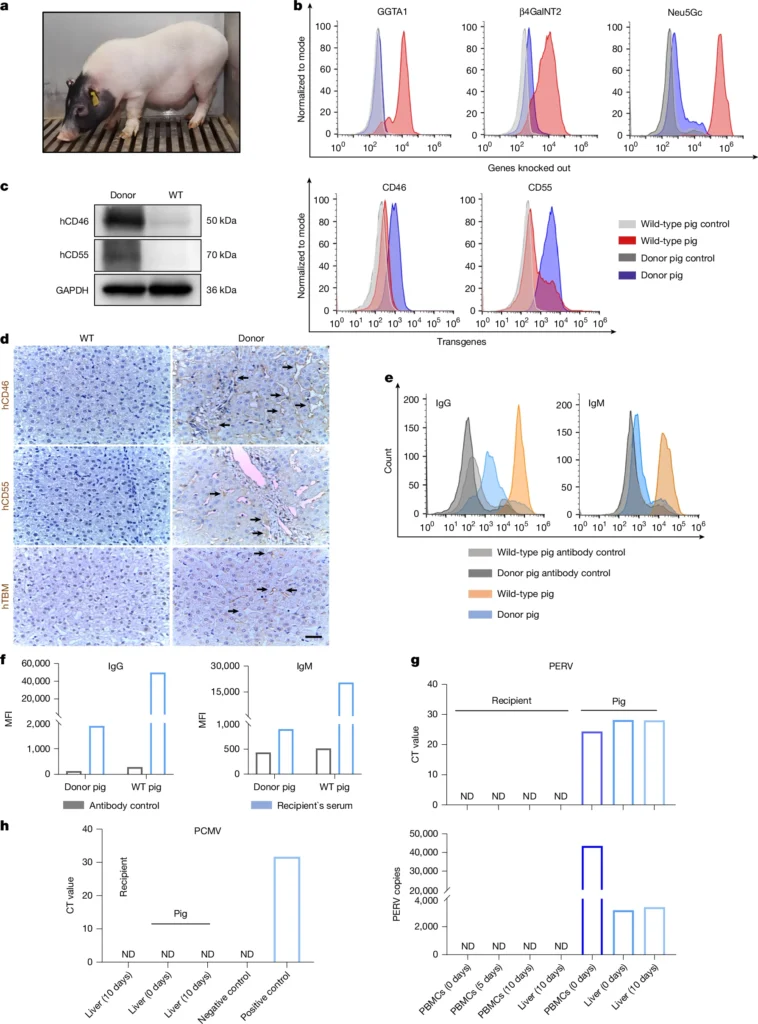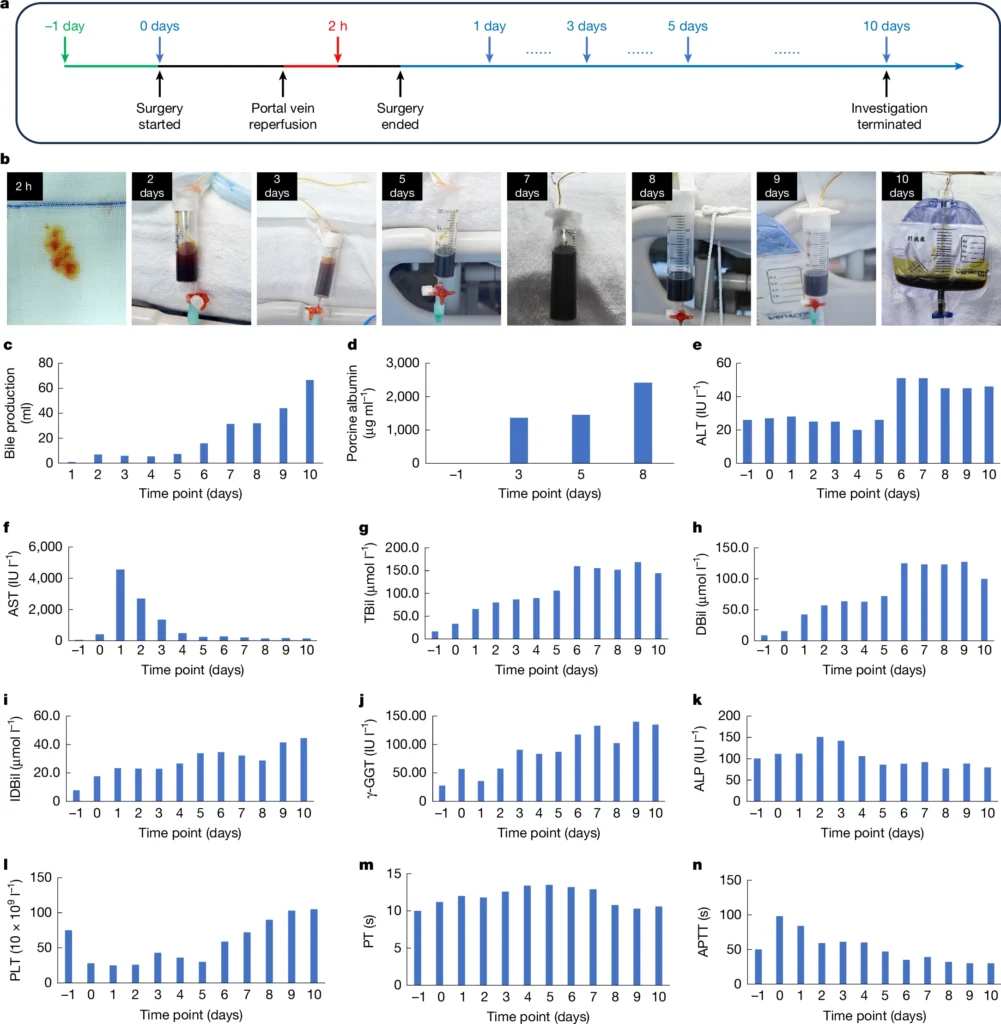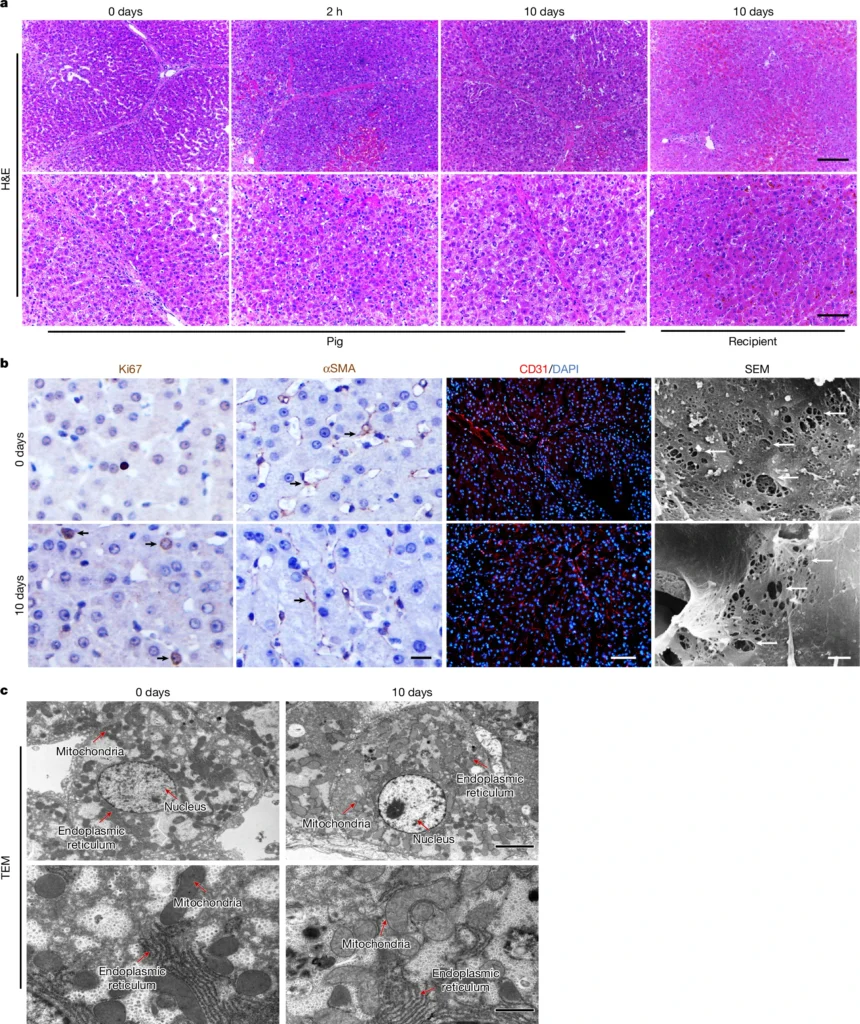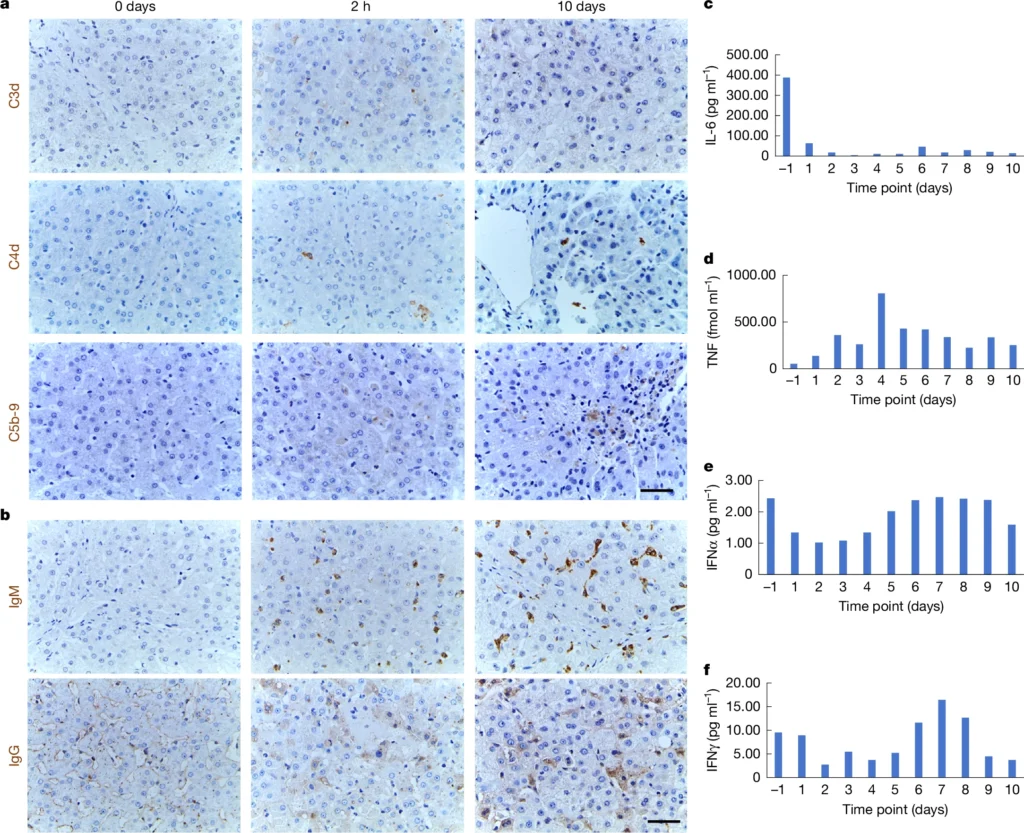The global shortage of donor organs remains one of the biggest challenges in transplant medicine. As of 2024, more than 100,000 people in the U.S. are waiting for organ transplants[1]. Scientists have long explored alternative solutions, and gene-edited animal organs have emerged as a viable option. Recently, researchers in China achieved a groundbreaking feat: they successfully transplanted a gene-edited pig liver into a brain-dead human recipient, and the xenograft remained functional for 10 days. This post summarizes the results, implications, and visual insights from the study published in Nature (2025)[2].
Why a Pig Liver?
Pigs are physiologically similar to humans in organ size and function, making them ideal candidates for xenotransplantation. In this study, a Bama miniature pig was genetically modified to reduce the risk of immune rejection and viral transmission.

This pig had six gene modifications:
- GGTA1, β4GalNT2, and CMAH were knocked out to prevent hyperacute rejection.
- Human genes for CD46, CD55, and thrombomodulin (hTBM) were inserted to enhance immune compatibility and reduce clotting risks.
Flow cytometry, western blotting, and immunohistochemistry confirmed the successful expression of human proteins in the pig’s liver. Additionally, no porcine endogenous retroviruses (PERV) or porcine cytomegalovirus (PCMV) were detected in the recipient.
The Transplant Procedure
A heterotopic auxiliary liver transplant was performed, meaning the pig liver was attached to the recipient’s circulatory system without removing the native human liver. This approach allowed for organ function monitoring and removal at the end of the study without risking the recipient’s original liver.

- Bile production began within 2 hours after portal vein reperfusion.
- By post-op Day 10, bile volume reached 66.5 mL (~2.25 fl oz).
- Porcine albumin was detected in the recipient’s blood, indicating metabolic function.
- Liver enzymes such as ALT remained stable, while AST spiked briefly before normalizing.
- Platelet counts (PLT), prothrombin time (PT), and activated partial thromboplastin time (APTT) remained within or returned to normal ranges, key signs of stable coagulation.
Microscopic Evidence: No Rejection Observed
Histological and microscopic analysis showed healthy liver tissue architecture without signs of immune rejection or fibrosis.

- Liver cells (hepatocytes) showed regeneration (Ki67 staining).
- Endothelial cells of the liver sinusoids maintained structure and function (CD31, SEM).
- Transmission electron microscopy (TEM) revealed intact mitochondria and endoplasmic reticulum structures.
Even on day 10, the xenograft maintained its cellular integrity, with no visible viral particles or immune-related damage.
Immune and Inflammatory Responses
The immune response was closely monitored. Immunosuppressants such as tacrolimus and mycophenolate mofetil were used to suppress T cell activation. Rituximab was added later when B cell activity increased.

- C3d, C4d, and C5b-9 complement deposition remained minimal.
- Moderate levels of IgG and IgM appeared in the xenograft by day 10.
- Cytokines such as IL-6, TNF, IFN-α, and IFN-γ stayed within manageable levels, indicating controlled inflammation.
What Makes This a Breakthrough?
This study isn’t just a one-time success. It opens up several exciting avenues:
- Bridge Therapy: The pig liver acted as a temporary support for the failing human liver, a potential lifesaver while patients wait for human donor organs.
- Immunological Insights: With genetic modifications and tailored immunosuppression, scientists controlled the immune response without full-scale rejection.
- Pathogen Safety: No porcine viruses, such as porcine endogenous retrovirus (PERV) or porcine cytomegalovirus (PCMV), were detected in the recipient.
Why Not Use It Permanently?
While the pig liver functioned well over 10 days, it likely couldn’t sustain the full demands of human metabolism long-term. Additionally, the surgery was performed on a brain-dead individual, and longer trials in living patients are needed to assess long-term viability.
Limitations and Future Prospects
The trial was intentionally limited to 10 days. The liver’s full metabolic capacity, detoxification ability, and long-term immunologic compatibility were not fully tested. However, the fact that a gene-edited pig liver can produce bile, albumin, and maintain stable circulation in a human body, without triggering fatal immune rejection, is an enormous step forward.
Future trials will likely investigate:
- Permanent pig liver transplantation strategies
- Longer-term survival of xenografts
- Optimization of immunosuppressive protocols
- Full replacement (orthotopic) liver transplants
This research demonstrates the real-world potential of gene-modified xenotransplantation. With ongoing advances in CRISPR gene editing, immunology, and virology, we’re closer than ever to solving the donor organ shortage. While challenges remain, this study offers a glimpse into a future where no patient has to die waiting for an organ.
Reference
- [1] The U.S. Organ Donation & Transplantation System
- [2] Tao, KS., Yang, ZX., Zhang, X. et al. Gene-modified pig-to-human liver xenotransplantation. Nature (2025).
- [3] CNN Health, Experimental transplant of gene-edited pig liver into human offers hope for new frontier of research


